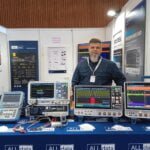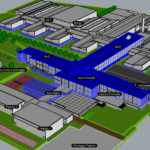
14 Feb The Six Things Your Next Oscilloscope Needs To Have
Today’s oscilloscopes are much more sophisticated than ever before, going beyond basic functions such as creating and capturing waveforms, displaying the voltage and frequency of a signal, or displaying noise between signals. In this webinar “The Six Things Your Next Oscilloscope Needs To Have”, R&S will give you the essential knowledge every design engineer must have when choosing their next oscilloscope.
Since the refresh rate characteristics of oscilloscopes are often presented differently by different manufacturers, their interpretation can be confusing or misleading. Oscilloscope manufacturers usually specify a refresh rate value that describes an oscilloscope model at its fastest acquisition rate. Since the refresh rate values are heavily influenced by numerous oscilloscope settings, it is often difficult to compare one manufacturer’s refresh rate value with another manufacturer’s value.
Triggering is often overlooked as an important selection parameter until the device is purchased. Digital triggering offers significant advantages over the traditional analog triggering of oscilloscopes and should definitely be considered when choosing an oscilloscope. Newer oscilloscope architectures have a single path that is used by both the signal and the triggering and is referred to as digital triggering. This document gives the reader an insight into digital triggering versus analog triggering and helps them to understand and compare them.
Acquisition memory depth equals the number of samples that are stored with each acquisition. Memory depth is specified in points (Mpoint) or samples (Msample). It is always better to use an oscilloscope with a large memory. This has two main advantages:
- Capturing a longer period of time
One obvious advantage of deep acquisition memory is the ability to capture a longer period of time. Depth memory helps in cases where cause and effect are separated by a longer period of time, and plays a key role in looking at events that simply take longer to develop. How much time can your oscilloscope capture at the fastest sampling rate? - Retaining maximum bandwidth while capturing more time
The second benefit is often overlooked. The more time your oscilloscope records, the more memory is used to maintain the maximum possible sampling rate. As the time captured increases, your oscilloscope will run out of additional memory. As a result, the oscilloscope starts to reduce the sampling rate. If you record twice as much time, the sampling rate is reduced by a factor of two.
Oscilloscopes are usually designed with a maximum sampling rate that corresponds to the maximum analog bandwidth required. If the sampling rate is reduced, an undesirable consequence is that the sampling rate may not be sufficient to reconstruct the signals accurately. Aliasing may occur.





